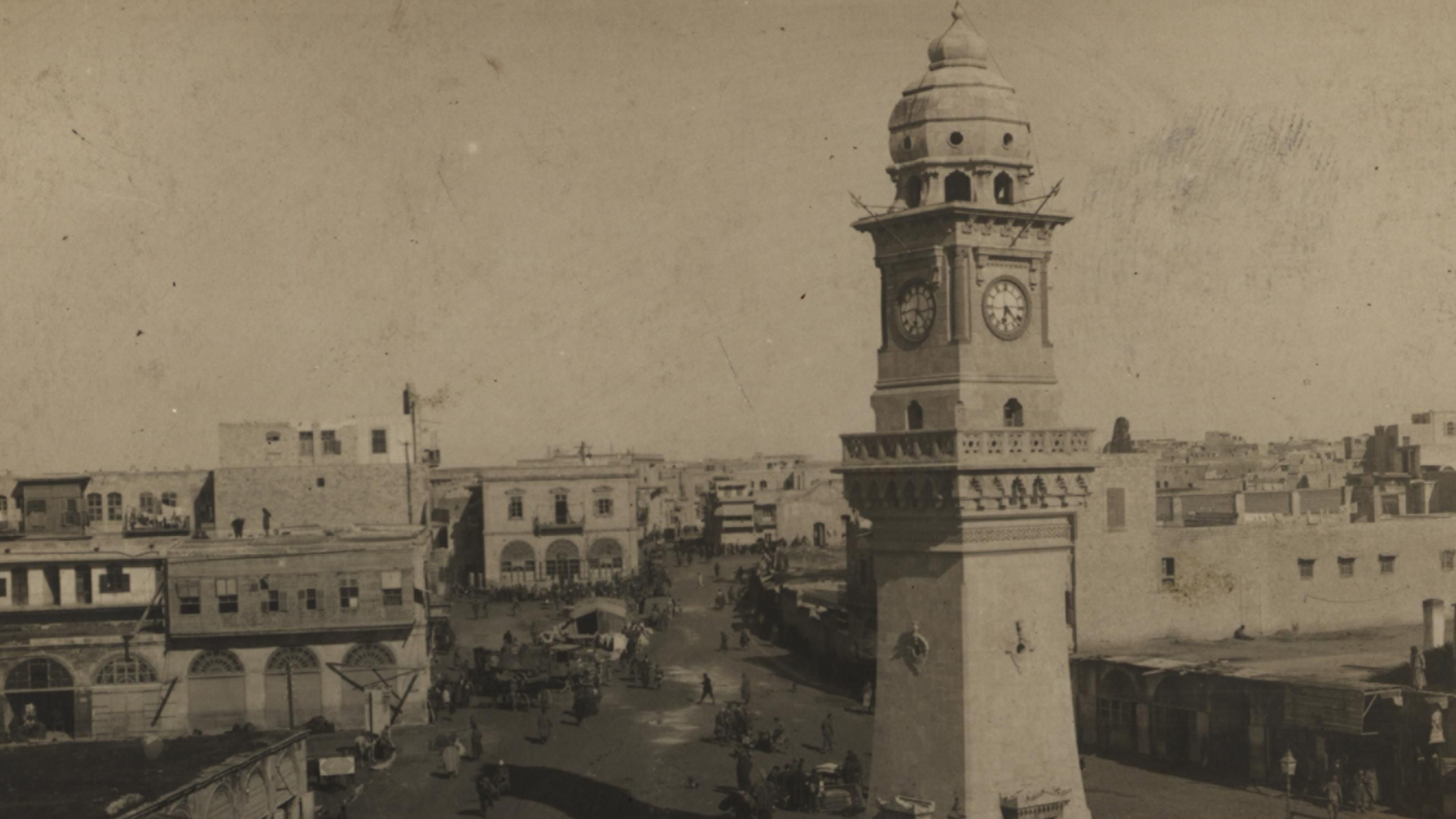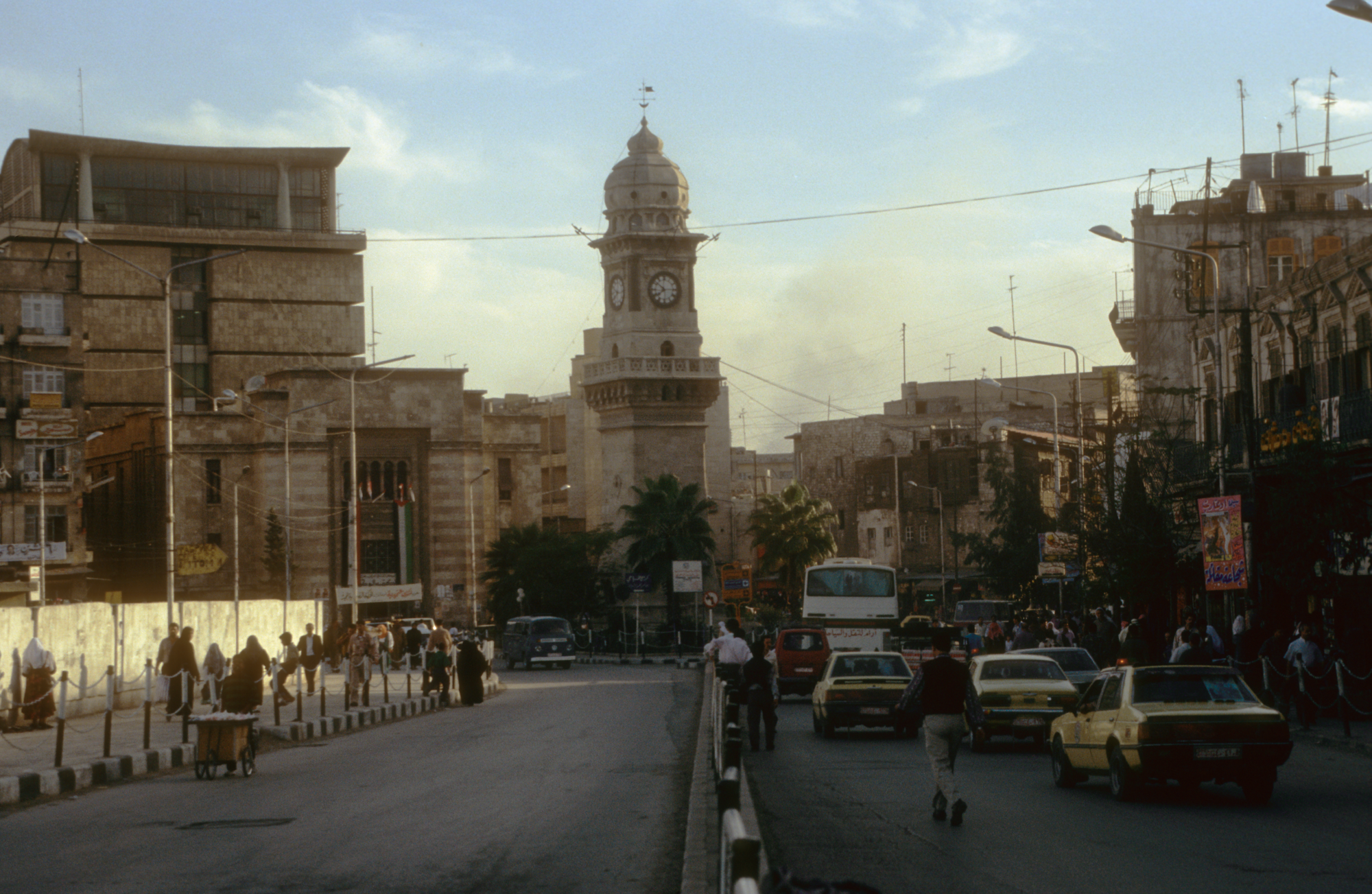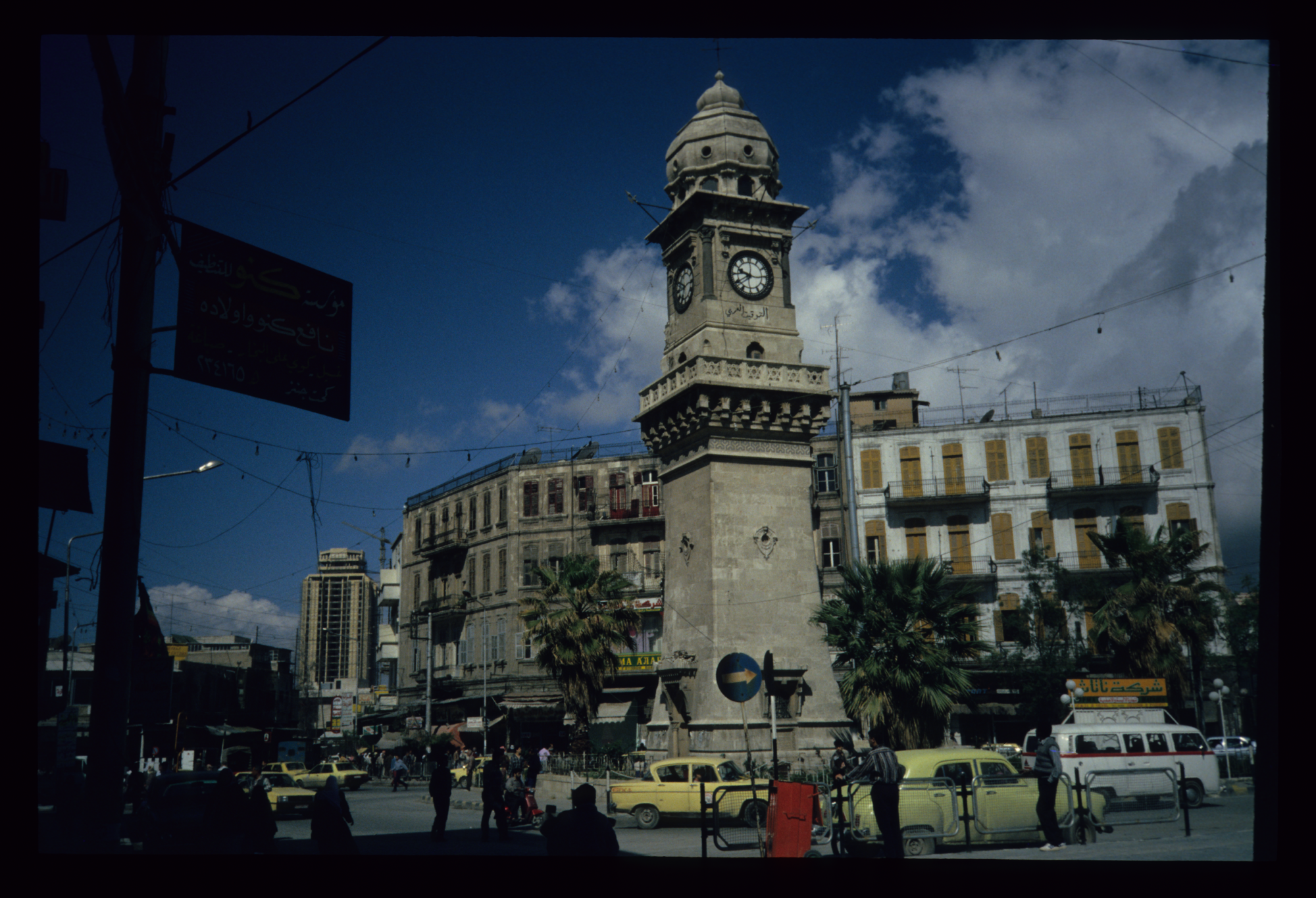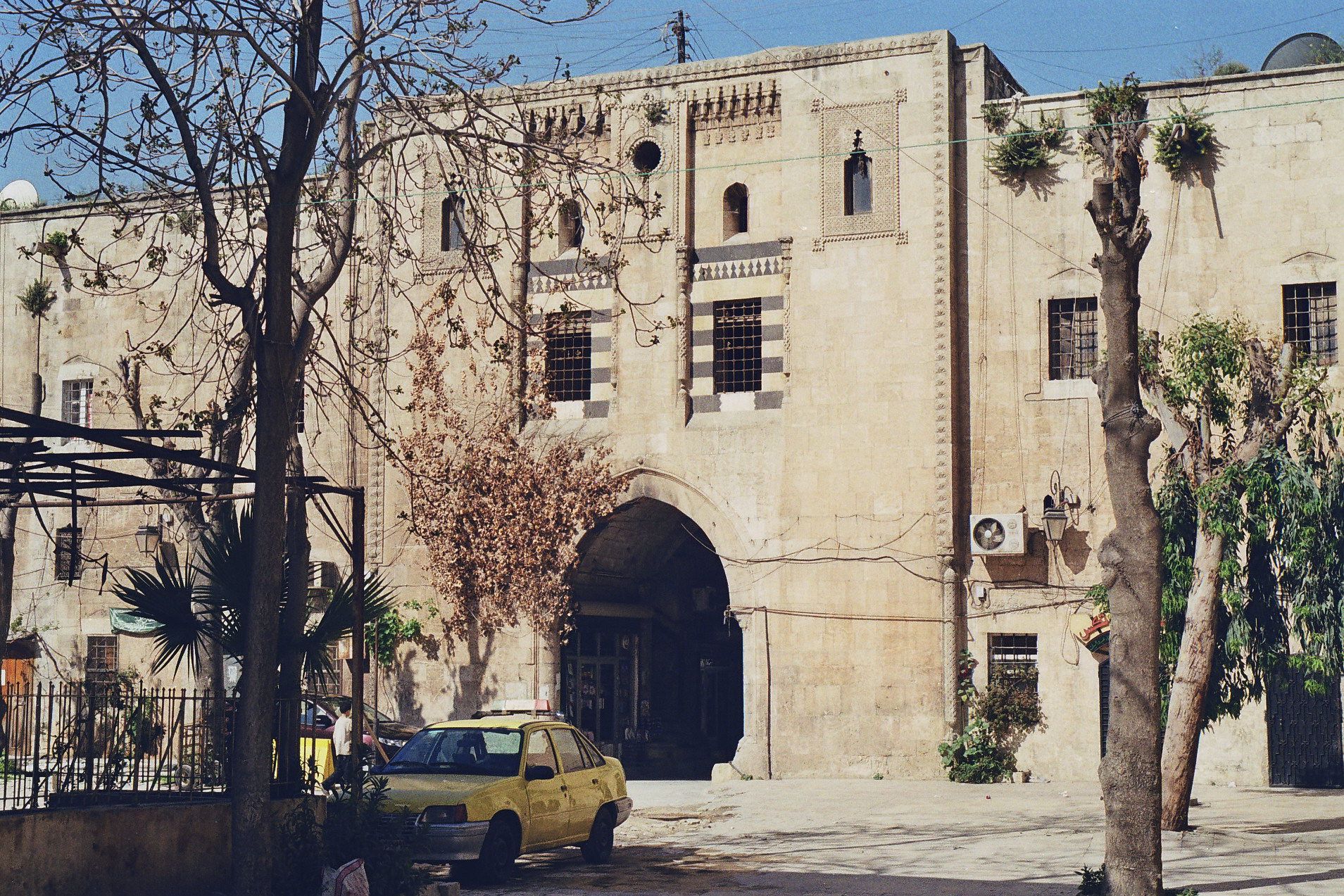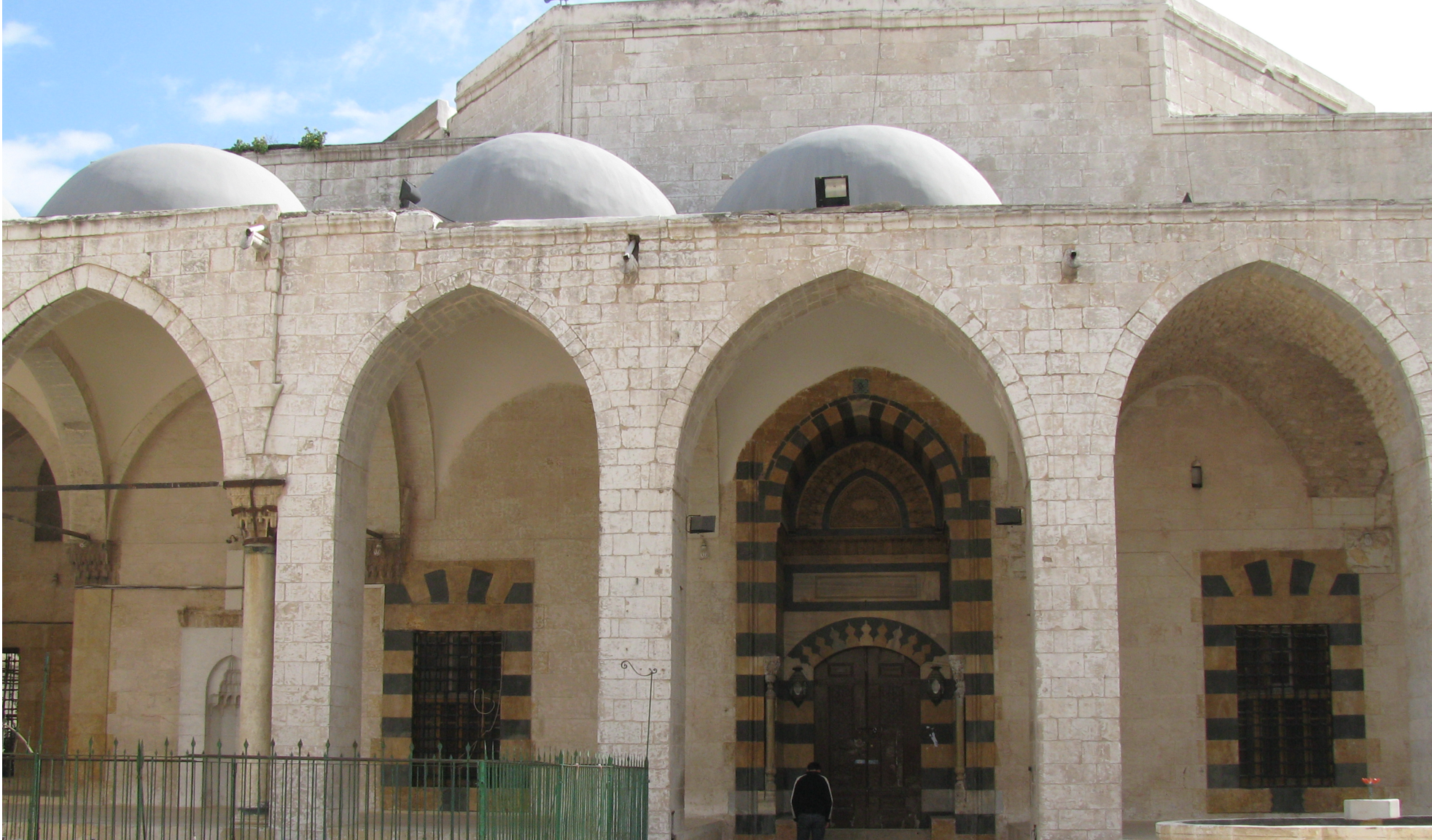About the Series
In this series we display personal stories of places (historical monuments) in Aleppo city, told by people who had a special bond with the place. The aim of this series is to highlight the intangible aspect of heritage places in Aleppo, and to communicate the inclusion of memory in reimagining and rebuilding a place through its people.
These contributions are part of the joint efforts of the Interactive Heritage Map of Syria Project along with the Aleppo Heritage Catalogue Project, which seeks to document the history and architecture of historical monuments in the city of Aleppo.
This is a memory from Aleppo about a young boy's fascination with the broken Bab Al-Faraj clock tower and his dreams of fixing it.
Childhood Aspirations: Fascination with Rare Mechanical Clocks
As a child, Ahmed would pass by Bab Al-Faraj clock-tower on his way to visit his uncle who repaired old clocks. The clock's mechanical parts fascinated him, and he dreamed of one day restoring it.
"Between the year 1993 and 1994...
...when I was in fifth grade, I would pass by Bab Al-Faraj clock-tower every time I headed to al-Jadida quarter to visit my uncle, Adnan Faris, who used to repair old clocks.
He was very well known for having most of the spare parts of clocks, and that he could repair the most difficult and complicated clocks out there. One time, a foreigner brought a rare broken clock from Europe that once had belonged to the collection of the last Russian Caesar, to be repaired in Aleppo in the hands of my well-reputed uncle.
Those rare mechanical parts have always fascinated me. Every time I walked past Bab al-Faraj and saw the clock out of order, I would aspire to repair it and think about how I could restore it back to life one day when I grow older."
Discovering the Bab al Faraj Clock Tower: A Rare Opportunity
When Ahmed turned 16, he applied to the municipality of the old city to work on the clock. He was granted permission to enter the tower and discovered the unique treasure inside. However, poor attempts at maintenance and repair had left the clock in disrepair.
"In 1995 official authorities...
...cleaned the tower’s stone facade and fixed the broken clock, but after a while it stopped again.
Since I always had the will to repair it, I applied to the municipality of the old city when I was 16 years old, as my first attempt to work on the clock. I got the approval to go and check it. When I entered the place it was a great joy for me to see this unique treasure from the inside for the first time. A place ordinary people cannot visit, or even touch.
My joy was immense, but accompanied by greater sadness due to poor former attempts to maintain or repair it.
The clock relies primarily on weights that have a specific and precise scale to rotate its different sections, including the one that rotates the hands, the mechanical section of the clock through which the bell rings according to the number of time, and the melody section through which several bells ring a certain melody.
It was not checked before why the clock kept stopping or where the error lies, as the attempts were not based on studies. When a fracture occurred in one of the gears and was replaced, the reason for the break was not really taken into consideration, and therefore it kept breaking and had so many errors without them being solved."
Traveling Back in Time: Inside the Clock Tower
"The minute you step inside the clock tower and start ascending up it feels as if you travel back in time, taken into another era, hundred and twenty years back. When you look at the technique of making the clock at that time and touch its mechanical parts, it transports you to another world.
The smell of oil and wood cannot be forgotten and your sensation is indescribable.
I was standing under the tower and imagining how the lights would look like, how would the clock hands turn, and what the bells sound like?"
Restoration Attempts: A Young Clock Repairman's Dream
Ahmed attempted to restore the clock, but his efforts were incomplete. Despite repairing many clocks across Syria, he felt too young for such an experienced job. He continued to have nightmares about the clock's destruction or theft.
"I began to restore the clock...
...but my work was not complete. During this process I started having nightmares that someone would come to repair the clock only to complicate and cause malfunctions that lead to a fatal failure which can never be fixed. I had my attempts to continue repairing it, but I failed as I was still very young for such an experienced job, though I had repaired many clocks in most Syrian cities."
"I had repaired the clock of Deir Sednaya...
... the clock of the city of Salqin, the clock of the train station in Aleppo, and the clock of the Hijaz station in Damascus. The latter was a very complicated one because it is the parent clock (1) associated with all clocks of train stations connecting to the last station in Madinah, Saudi Arabia. It has a very precise mechanical and electrical magnetic work attached to it to take the timing in order for all clocks to work together and at the same time along the path of the train line."
(1) Damascus was the first stop of the Hijaz railway.
"As for Bab Al-Faraj clock...
... I was always accompanied by a constant nightmare, in which I wake up at night after disturbing dreams that the clock was destroyed by war, stolen, removed, or that something else was built in its place."
The Clock Tower Comes Back to Life
In 2017, at the age of 37, Ahmed was able to take on the full responsibility of restoring the clock. He worked with precision and dedication, bringing the bells back to life. The clock had not worked regularly for 55 years, and its bells had not been heard by city dwellers.
"My first visit at the end of the war in Aleppo...
...was to go and see the clock tower. My heart was reassured when I found it in its place, un-tackled. Only some copper pieces were stolen for their material value. I later compensated the pieces. I proceeded to repair the clock at the beginning of 2017 with the rapid approval from the city’s governor. It was a volunteer job, but I was in an age (37 years old) where I was able to take full responsibility for that work. I took the work seriously, and I fixed it with precision.
The bells started ringing again – a sound that had been forgotten by the city dwellers. An elderly man once told me the clock only rarely worked in the past 55 years, and its bells were never heard."
The Moment of Fulfillment
"At half past five, at sunrise on Eid Al-Fitr, in 2017, I completed my work in the clock. I went out of the tower and stood in the square, pondering it from below. At six o’clock, the sun rose up shining on its golden hands brightening the façade, and the bells rang for the first time.
My joy was immense!
I will never forget this moment. Then I went home and took a deep sleep rest. On the third day of Eid, I went to visit the clock with my family. It was four o’clock in the afternoon. When the bells knocked the children started dancing, joyful to hear the sound. My dream has been fulfilled for this important monument as I left a personal impact and had a hand in its maintenance and brought it back to life."
A New Hope: The Future of Aleppo's Beauty
"I hope Aleppo will remain in its original beauty without deformation, and that the clock will continue to work regularly and not be tampered with in any way."
Memories of Bab al Faraj Clock by Ahmed Anis
DISCOVER MORE MEMORIES FROM ALEPPO
A Tale of Khan al-Wazir
This memory is a personal journey through Khan al-Wazir, Aleppo, of a textile merchant who grew up and worked in the historic trading center. It explores Paul’s memories and experiences of the Khan, and their hopes for its future restoration.
The al-Bahramiyya Mosque
A deeply personal account of one man's relationship with a beloved mosque that has been ravaged by war. This memory is a touching tribute to a place that holds deep meaning for the narrator, Sami Bahrami, and the Aleppian community.
The al-ʿAdiliyya mosque
In this memory statement, Omar Abd Alwahhab Katta recounts his personal connection to al-ʿAdiliyya Mosque in Aleppo, which holds both historic and religious value for the people of Aleppo.
